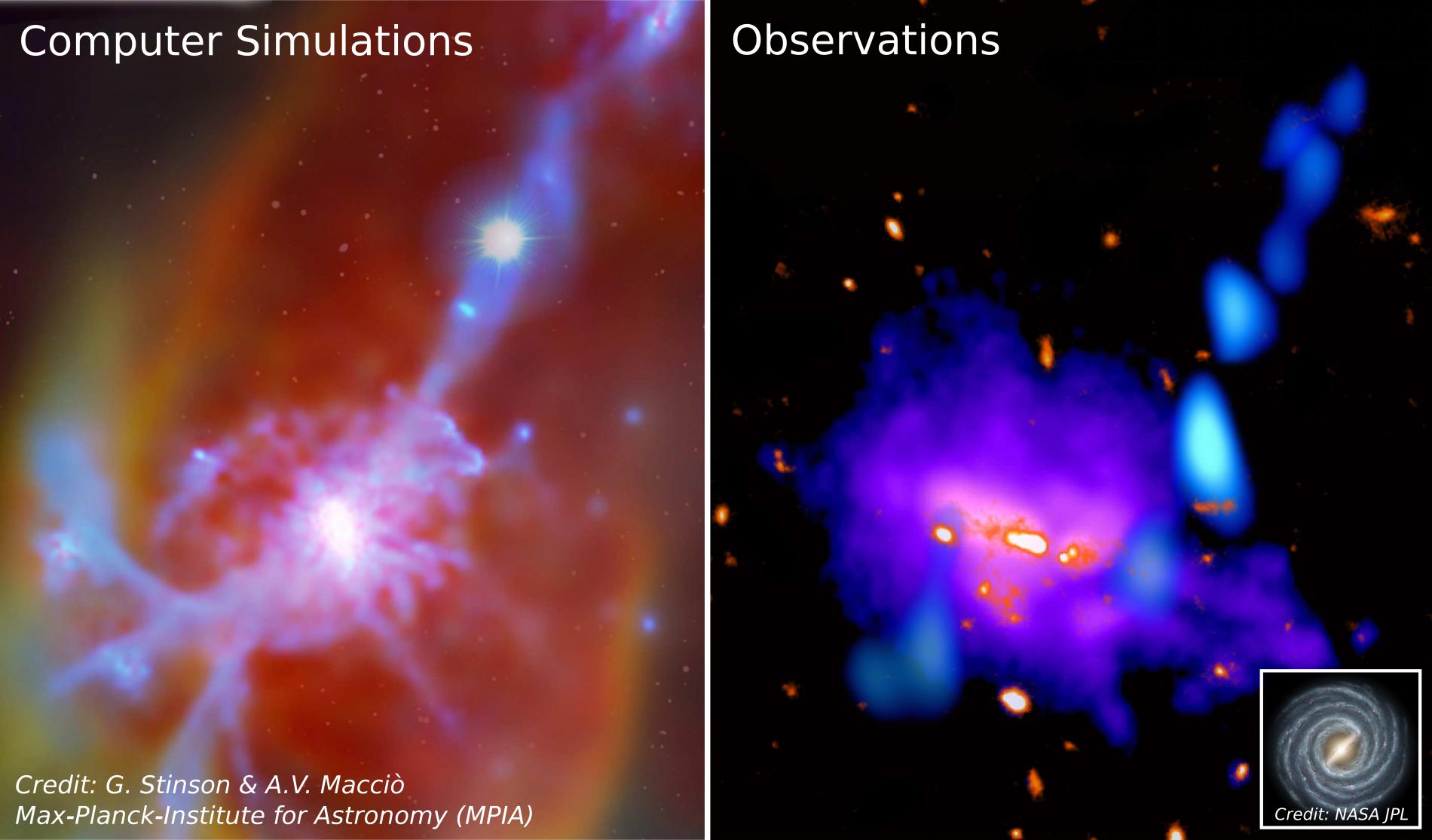Cosmic stream found that shows how galaxies form
The Institute de Astrophysics de Andalusia (IAA-CSIC) is participating in the discovery of a gas stream feeding a distant, massive galaxy, which points to the existence of a large-scale material supply network in the universe
We know that the growth of galaxies in the infancy of the Universe was caused by the accretion of gas from their surroundings, and computer simulations predict the existence of cosmic streams of gas that flow towards distant galaxies, feeding them. Now, a scientific team studying the early universe has found a long stream of gas flowing into a massive galaxy, supplying it with the raw material to form billions of new stars. The discovery, made with the Atacama Large Millimeter/submillimeter Array (ALMA) telescope and published today in the journal Science, sheds light on how galaxies formed.
The detected stream flows towards the galaxy 4C 41.17, also known as the Anthill Galaxy because it is made up of many small galaxies that will eventually merge under gravity to form a single massive galaxy. It is a very distant galaxy, whose light emerged about one and a half billion years after the Big Bang, when the universe was little more than a tenth of its present age. Its observation thus allows us to glimpse very remote stages in the history of the universe.
"Similar to rivers flowing into the ocean and carrying nutrient-rich sediments, the new ALMA observations reveal a cosmic stream containing a large amount of cold gas rich in carbon atoms", explains Bjorn Emonts, a researcher at the US National Radio Astronomy Observatory (NRAO) and lead author of the research. "This gas is the raw material from which new stars will form.
With the amount of gas it receives, hundreds of new stars can form in the galaxy every year. "This matches the rate of star formation previously observed in the Anthill, and indicates that the cosmic stream is likely to be the primary source of raw material that the Anthill Galaxy needs to continue growing", says Montserrat Villar-Martín, a researcher at the Centre for Astrobiology (CAB/CSIC-INTA), who is participating in the research.
In fact, this current could help the Anthill grow into a giant galaxy. Conversely, if the gas supply were to stop, it would be destined to become a barren galaxy populated only by old stars in about half a billion years, a short period of time on cosmic scales.

A POSSIBLE LARGE-SCALE SUPPLY
The science team concludes that the stream comes from what is known as the "cosmic web", or the network-like structure of interconnected filaments of gas, galaxies and dark matter that extends across the universe. “The cosmic stream we have detected spans almost half a million light-years, which is equivalent to almost ten times the size of our Milky Way galaxy", says Miguel Pérez Torres, a researcher at the Institute de Astrophysics de Andalusia (IAA-CSIC) who is participating in the discovery. “But it is a small structure compared to the vast scale of the cosmic web. If the two are connected, it would mean that the Anthill Galaxy is not being built in isolation, but has a supply line linked to large-scale gas storage throughout the Universe".
The cosmic web is thought to contain mainly hydrogen and helium, the primordial elements produced in the Big Bang. The large amount of carbon in the stream came as a surprise, since this element, like many others, is only produced in stars. It is likely that the presence of carbon means that the stream is carrying small galaxies, as predicted by numerical simulations: stars in these small galaxies enrich the stream with carbon and other "building" materials before reaching the Anthill.
The science team hopes that future ALMA observations will reveal whether cosmic streams of carbon-rich gas are also connected to other distant anthills, in a cosmic network of supply lines that would help build galaxies.
B. Emonts et al. “A cosmic stream of atomic carbon gas connected to a massive radio galaxy at redshift 3.8”, Science, March 2023. DOI: 10.1126/science.abh2150
Instituto de Astrofísica de Andalucía (IAA-CSIC)
Unidad de Divulgación y Comunicación
Silbia López de Lacalle - sll[arroba]iaa.es - 958230676
https://www.iaa.csic.es
https://divulgacion.iaa.csic.es

